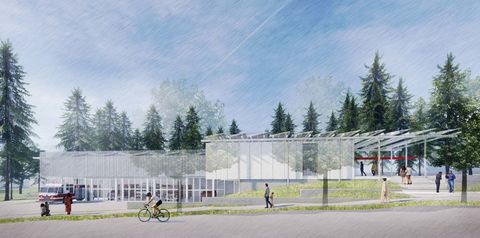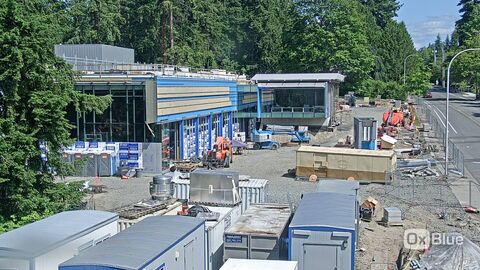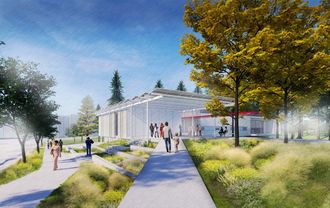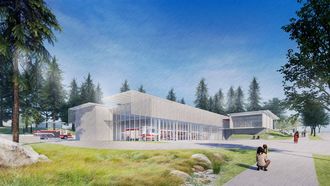The city is building a new fire station to better serve residents in the Northwest Bellevue, downtown and BelRed areas. Fire Station 10 will improve response times for fire and medical emergencies in those areas, where the growing number of high-rise structures include “vertical response time” to upper floors.
Fire Station 10 will be on the 1200 block of 112th Avenue Northeast. Engine 110, Aid 101, Medic 101 and Battalion 101 will be posted there. Construction, pushed back from 2020-2021 due to the pandemic and other issues, began in March 2023.
Construction Update
As of June 3, 2025 the building exterior insulation and finishes are being installed, the roof is sealed with some rooftop equipment installed and construction of the interior continues with drywall installation.
You can watch a live feed and/or timelapse of the construction process.
Design Features
Located on a partially forested site, Fire Station 10 is bordered by residential neighbors, McCormick Park and a wetland. Design elements include electric fire engine charging stations and infrastructure. For the site, we'll restore habitat disturbed by previous development, maintain as many trees as possible and plant additional trees to act as a natural residential buffer.
Designed with community connection in mind, Fire Station 10 will feature a publicly accessed training classroom and gallery entry featuring artifacts from Bellevue Fire's history. Placing an emphasis on the natural environment, a visual walkthrough of the station design highlights the strategic and intentional incorporation of natural light and building materials.




